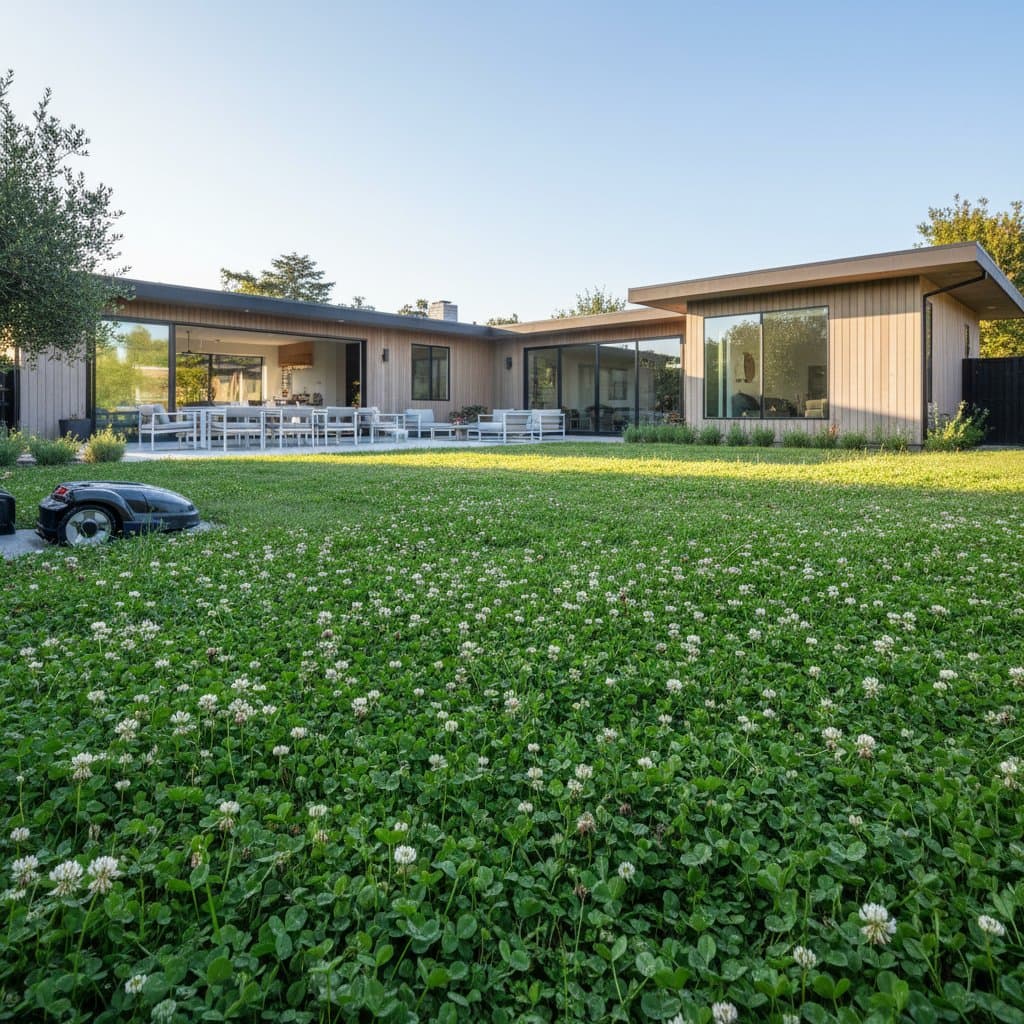Clover Lawns as a Sustainable Grass Alternative: 70 Percent Less Mowing Required
A manicured lawn enhances the tranquility of any outdoor area, yet conventional grass varieties require substantial water, fertilizer applications, and regular mowing that challenge many homeowners. In California, where water conservation ranks high, residents increasingly opt for clover lawns as a resilient, low-maintenance substitute. These lawns cut mowing frequency by approximately 70 percent, retain their green vibrancy during summer months, attract beneficial pollinators, and provide a plush surface that demands minimal intervention.
Clover establishes quickly and adapts to diverse soil types and sunlight levels, making it ideal for varied California landscapes. Homeowners appreciate how it transforms a high-effort yard into a serene, inviting space without the ongoing labor.
Key Reasons to Choose Clover Lawns
Clover excels in challenging environments through its natural nitrogen fixation process, where beneficial bacteria in its roots convert atmospheric nitrogen into usable nutrients for the plant and surrounding soil. This biological mechanism eliminates the reliance on synthetic fertilizers, which often lead to nutrient imbalances and environmental runoff. For those weary of battling sparse or yellowing grass patches, clover creates a uniform, resilient cover that remains supple even in periods of drought.
Beyond functionality, clover delivers aesthetic value with its delicate foliage and subtle blooms that integrate seamlessly into garden designs. Pair it with gravel walkways, drought-tolerant shrubs, or colorful perennials for a cohesive look that softens hardscapes. Unlike grass, which may fade or sparse out under intense sun, clover maintains its lush density and color palette with basic care, ensuring a polished appearance year-round.
Core Advantages of Installing a Clover Lawn
-
Significant Reduction in Mowing Frequency
Clover grows slowly to a height of three to four inches, requiring attention only every two to four weeks depending on local conditions. To achieve a neat finish, use a mower set to a high blade height for infrequent trims that promote thicker coverage and discourage weed invasion. This approach saves time, fuel, and equipment wear compared to weekly grass maintenance. -
Minimal Water Requirements
The extensive root network of clover reaches depths of up to two feet, accessing deeper soil moisture reserves that grass roots cannot. In arid California regions, this feature means irrigation needs drop by 50 to 75 percent, aligning with local restrictions and reducing utility bills. Apply one inch of water weekly during establishment, then taper to biweekly sessions as the plants mature. -
Elimination of Fertilizer Dependence
Through nitrogen fixation, clover supplies its own nutrients and enriches adjacent areas, fostering healthier growth for nearby ornamentals without added inputs. This natural fertility cycle prevents soil depletion and avoids the pollution risks associated with chemical fertilizers entering streams or groundwater. Test soil pH annually to ensure it stays between 6.0 and 7.0 for optimal performance. -
Support for Pollinator Populations
Delicate flowers in white or pink hues draw bees, butterflies, and other vital insects, boosting local biodiversity in urban settings. If pollinator activity concerns you, schedule mows before bloom peaks in spring or early summer to suppress flowers while retaining the groundcover's benefits. This balance preserves ecological value without overwhelming the space. -
Durability Under Traffic and Against Pests
Clover withstands moderate foot traffic from families or pets, bouncing back from compaction with minimal scarring. It resists common pests like grubs and chinch bugs better than grass, reducing the need for interventions. For high-traffic zones, incorporate 20 percent microclover varieties, which offer finer texture and greater toughness.
Steps to Convert Your Existing Lawn to Clover
Transitioning from traditional grass to clover involves targeted preparation to ensure successful establishment. Start in early fall or spring when soil temperatures range from 50 to 85 degrees Fahrenheit for best germination. Mow the current lawn as short as possible, then use a dethatching rake or sod cutter to remove thatch and expose bare soil, clearing away clippings and debris.
Broadcast clover seeds at a rate of one to two pounds per 1,000 square feet, gently raking them into the top one-half inch of soil for good seed-to-soil contact. Choose white Dutch clover or microclover for lawns, as these varieties form dense mats. Water the area lightly once or twice daily for the first seven to ten days to keep the surface moist until sprouts emerge, then shift to deeper, less frequent watering to encourage root development.
For enhanced variety and resilience, blend clover seeds with 30 to 50 percent low-maintenance fescue or buffalo grass. This combination introduces subtle color variations and strengthens the lawn against shade or heavy use. Monitor progress over the initial months, pulling any persistent weeds by hand to allow clover dominance.
Maintaining Your Clover Lawn Over Time
In the first year, observe patches of uneven growth as the clover competes with remnants of old grass, but consistent light mowing will encourage spreading. By the second season, the lawn achieves full density, requiring only seasonal touch-ups and occasional overseeding in thin spots. Amend soil with compost every two years to support long-term vitality, and adjust watering based on rainfall patterns.
Clover lawns adapt well to California's diverse microclimates, from coastal fog to inland heat, providing a flexible solution for sloped yards or shaded corners. Pets and children enjoy its cushioning quality, and the reduced noise from infrequent mowing contributes to a peaceful home environment.
Realize the Rewards of a Clover Landscape
Adopting a clover lawn represents a commitment to harmonious, nature-aligned gardening that yields enduring benefits. Homeowners gain a vibrant, low-demand green space that conserves resources, invites wildlife, and elevates property appeal with minimal ongoing effort. Integrate it thoughtfully with hardscapes and natives for a yard that embodies California's blend of beauty and environmental stewardship, fostering joy in every step across its soft expanse.

